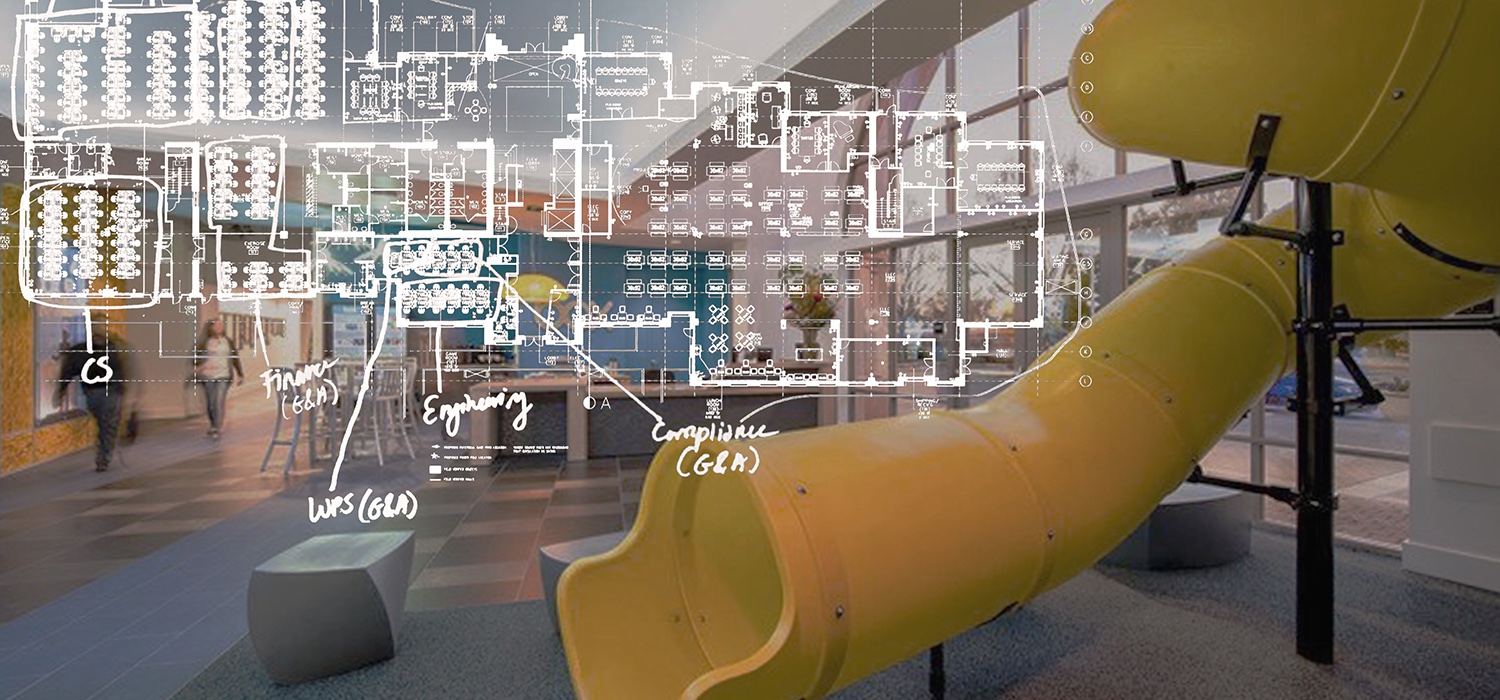
Services
- Workplace Research
- Real Estate Advisory
- Design and Policy Advisory
Client Objectives
- Develop a design strategy for current and future workplaces
- Make crucial decisions about real estate portfolio expansion
- Align workplace with BOX culture and brand
- Create strategy for managing future growth
Box
Changing How and Where the World Works
BOX describes their mission as “to make businesses more productive, competitive and collaborative by connecting people and their most important information.” When leaders at the cloud file-sharing company realized their workspace wasn’t fulfilling that mission, they turned to PLASTARC. We formulated a plan for immediate and future real estate decisions and for using workspace design to reinforce the BOX experience and brand.
BOX began as a four-person team in a Berkley, CA, garage in 2005. By 2014 they had grown to a 1,000-strong work force in five locations on two continents. In the last four years alone the company’s staff has grown by some 1,000 percent.
As boundaries between work and life blurred – a phenomenon endemic, if not unique, to Silicon Valley – employees and recruits came to expect a variety and high level of services in the workplace, including shuttles, food service and social activities, to name a few. Enlightened space design, work/life flexibility and seamless technology were needs as basic to this cohort as running water.
BOX knew that workplace design was critical not only to attracting and retaining top talent but also to keeping people engaged and maximizing their productivity. These imperatives were clear, yet the company struggled to devise a real estate strategy to keep up with the speed of their own change, much less to sustain the high energy level generated by their 2015 IPO.
We created a vision for the BOX workplace and its relationship to the company’s mission, employees’ experience and the desired company image for visitors and clients. Our three-month engagement included cross-functional employee interviews, space-use studies, workplace observations, organizational research and workplace data analysis. Gathering both quantitative and qualitative data, we sought to tell the story of BOX and its workplace – past, present and future. We brought the data to bear on issues company leaders were grappling with, such as choosing real estate management models (decentralized vs. hub-and-spoke), compromising their culture by opening more locations farther from the home office, and an ever-present feeling of overcrowding in their offices.
We recommended a three-pronged strategy for future BOX workplaces: One, blend the physical and digital experience while aligning work processes, tools and rewards across locations. Two, shift the program to accommodate employees’ often-conflicting needs to retreat and to collaborate. Three, design workspaces and processes that embody BOX’s mission so the company could truly “walk the talk.”
“The research-driven approach” says Sandra Ladao, BOX’s head of real estate and facilities, “clarified these issues and gave us more confidence in our ability to develop a practical strategy.”

